Blue Gascony Basset
From the beginning, the Blue Gascony Basset was bred as a scent hound, especially for hunting small game, like rabbits, foxes, and hares. These dogs hunt by scent in packs of 4-8 dogs and are reputable specialists in the hunt of rabbits and hares. This breed is known worldwide as Blue Gascony Basset, although it is usually called „Basset Bleu“ or Basset Bleu de Gascogne.
At home, Blue Gascony Bassets are very quiet and calm. It is not easy listening to a Blue Gascony Basset barking at home, and most likely, they will be sleeping during the day. Outside of the house, they are completely different dogs because they were bred to follow scents. When they find an interesting scent, you’ll know that the voice of a Blue Gascony Basset sounds like a beautiful howling voice, probably one of the nicest voices among all the scent hound breeds.

Height:
13–15 in (34–38 cm)

Weight:
35-40 lb (16-18 kg)

Origin:
France

Life Expectancy:
12-14 years
Dog Breed Characteristics
This breed has some specific traits that make it easily recognizable. The first of these unique traits is its color, which is common for the four Blue Gascony breeds (Grand, Petit, Basset, and Griffon).
The second unique trait is its rather small size.
The third unique trait is its long ears. They are fine, curled in, ending in a point and must at least reach their noses, or further.
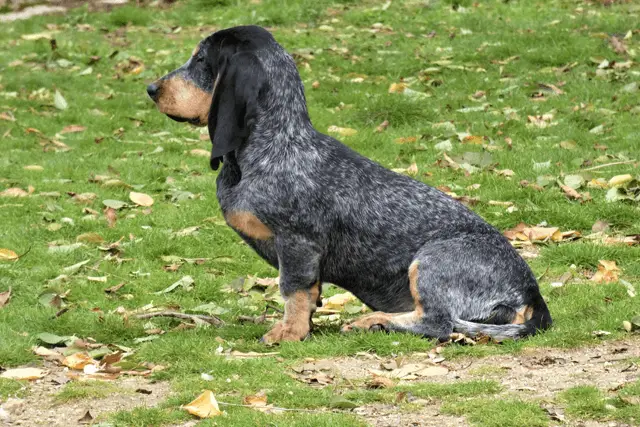
Basset Bleu de Gascogne coat
The coat color is one of the unique characteristics of the breed and it is part of its name. The description of the color is entirely mottled (black and white) giving a slate blue effect; marked or not, with more or less extended black patches. Two black patches are generally placed on either side of the head, covering the leather, surrounding the eyes, and stopping at the cheeks.
They do not meet on top of the skull, they leave a white interval in the middle of which is frequently found a small oval-shaped black spot, typical of the breed. Two more or less bright tan markings are placed above the superciliary arches, giving a “quatreoeuillé” effect to the eyes. Also, tan traces are found on the cheeks, the lips, the inner face of the leather, on the legs, and under the tail.
Shedding and care
The Blue Gascony Basset is a shorthaired coat breed, so they shed their coat two times a year (in the middle of spring and middle of fall)
It is a rustic breed used mainly for hunting, so it doesn’t need any special care. It is very important to give the Basset breeds proper quality feeding and good care.
It is recommended to brush them frequently, at least once a week, and also clean their ears to avoid problems like otitis externa. Nail trimming should be done if the dog doesn’t naturally wear them down.
Exercise needs
Prepare to ensure your Blue Gascony Basset with at least 1 hour of exercise every day. If you have the opportunity to let your dog run free somewhere, your Blue Gascony Basset will be happy, but be careful because they can run fast and if they catch an interesting scent, it will not hesitate to follow it as far as necessary.
A Basset Bleu de Gascogne can adapt to apartment living, but make sure to give it the opportunity to go for long walks every day.
Training
This breed is not easy to train. It is a scent hound, so it was selectively bred to roam free in the forest and it should be able to make its own decisions while following a scent. So a big amount of patience is needed while training a Blue Gascony Basset.
Basset Bleu de Gascogne favorite activities
As a scent hound, the Blue Gascony Basset loves walking in the forest and countryside following all kinds of scents. They enjoy walking, running, jumping, swimming, and participating in all sorts of different activities. It is a breed that will not run after a ball to bring it back, nor will it run beside you while you are running or cycling.
Just like the other scent hound breeds, the Blue Gascony Basset is not good for obedience, flyball, or herding. They could be good for rally or agility because they are dogs with great agility and stamina, but training them can be a bit problematic.
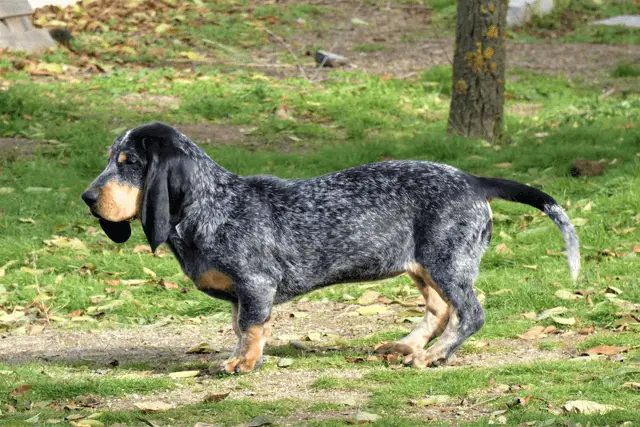
Blue Gascony Basset temperament
The Basset Bleu de Gascogne is a pack hound, so it loves to hang out with other dogs. It is not common for these dogs to get into fights with other dogs. They are quiet dogs at home but very active outside. They are not very good watchdogs because they will greet most people with a wagging tail (postman included). They are generally very kind to people and children included.
Scent hounds, in general, are not dominant. Blue Gascony Basset has no problems living with other dogs, and there aren’t any dominating problems between them.
Socialization
The Blue Gascony Basset is naturally very friendly, but it is possible to notice some shyness in them. For that reason, it is important to properly socialize them as soon as possible. Expose them to different situations, sights, sounds, and people, and you will have a well-behaved and stable dog in no time.
Intelligence
The Blue Gascony Bassets are very intelligent, but their intelligence is not the same as the intelligence of the herding dogs. They are intelligent in a way that allows them to make their own decisions while in pursuit of a scent. These dogs do not need to go to a doggy school, but if you are looking for a dog that will always follow your orders, don’t be shy to ask professional handlers and trainers for help.
Potential health problems
The Blue Gascony Basset is generally a healthy breed. They usually live 12-14 years, and they don’t have major health concerns. The two main health issues potentially are otitis externa and bloat.
Otitis externa should be avoided if you clean their ears at least once a week, and bloat should be avoided if you serve their meal in a bowl on the floor. Feed them twice a day, and don’t allow your dog to have intense exercise 2 hours after or before eating.
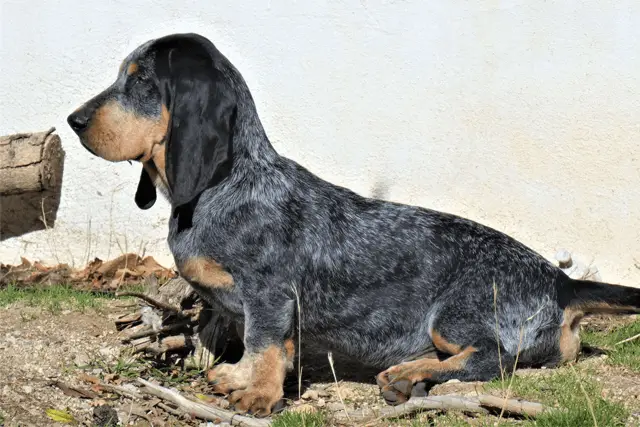
Basset Bleu de Gascogne breeders
It is not a popular breed so, fortunately, the puppy farmers are not interested in them.
The most important thing to keep in mind is to buy the puppy from a reputable breeder involved with the breed.
It is always a good idea to ask the breeders how the parents of the puppy are, and if it is possible, try and see the parents before you buy the puppy. If it is possible, try and pick up the puppy directly from the breeder's home.
Closing statement
The Blue Gascony Basset is a breed that fits best with active people that love going for long walks in the woods and countryside. To this day, the best breed specimens can be found in their native country of France, but there are also great puppies in Spain, Finland, the Czech Republic, and the United Kingdom.
Blue Gascony Bassets can be wonderful family dogs since they get along well with just about everybody. In fact, they’re so pack-oriented that they can suffer from loneliness. If you’re considering getting only one Basset Bleu de Gascogne, you might want to rethink and get at least two dogs that can keep each other company at all times.
SEARCH BLUE GASCONY BASSET BREEDERS
This breed was presented in collaboration with Mr. Mariano Galán - Morning Dew Sweepers Kennel
Photos by: Mr. Mariano Galán - Morning Dew Sweepers Kennel
World Dog Finder team

Updated at07.09.2023.
Breed History
The Basset Bleu de Gascogne breed is related to all the Basset breeds, and they have a common origin, but the first references to these dogs are from the last quarter of the 19th century. The first written description is from 1893, when Blue Gascony Basset was mentioned in the French magazine L'Eleveur.
This breed is a result of size reduction from the ancient breed, the Great Gascony Blue. This breed is one of the most ancient hound breeds, contemporary of the Saint Hubert Hounds, and its origins are in the 14th century. This breed was originally used for hunting big game like wolfs, wild boars, and bears, and it was very common in the south of France, where the Gascony region is located.
It is very important to mention Mr. Alain Bourbon since he was the one who rescued the breed from the brink of extinction during the first quarter of the 20th century, and he published the famous book „Nos Basset Français“ (Paris, 1911). That is a book dedicated to all French Basset breeds, including some breeds that are now extinct, like Basset Ardennais or Saintonge Bassets.
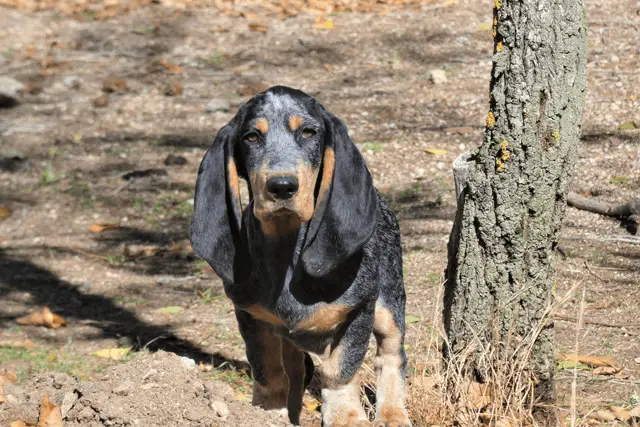
This book is also important because it has some significant artwork by famous illustrator P. Mahler.
During the 1st and 2nd World Wars, the Blue Gascony Basset breeders managed to keep the breed alive, mostly because the Gascony region was far away from the war zone. However, the number of available dogs was significantly reduced.
After the 2nd World War, the Basset Bleu de Gascogne breeders gradually recovered the number of Blue Gascony Basset, and it started to be a common breed among southern French hunters.
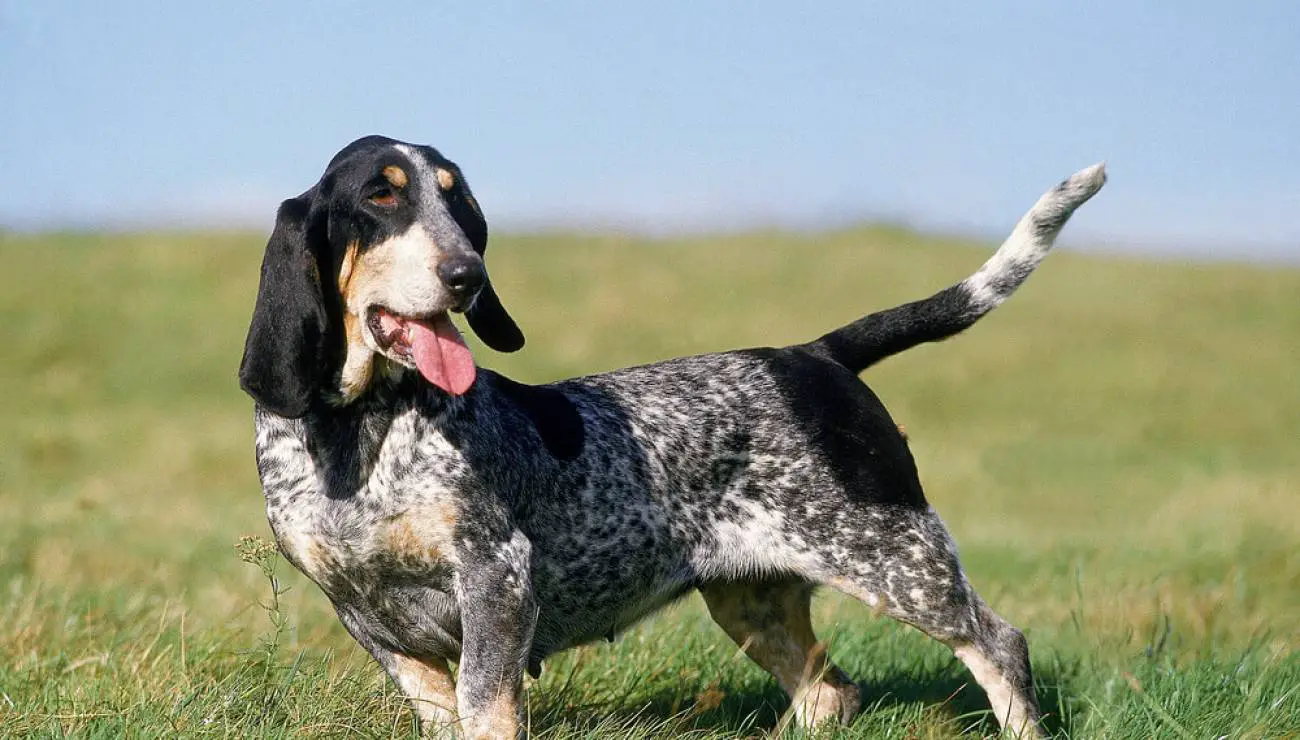
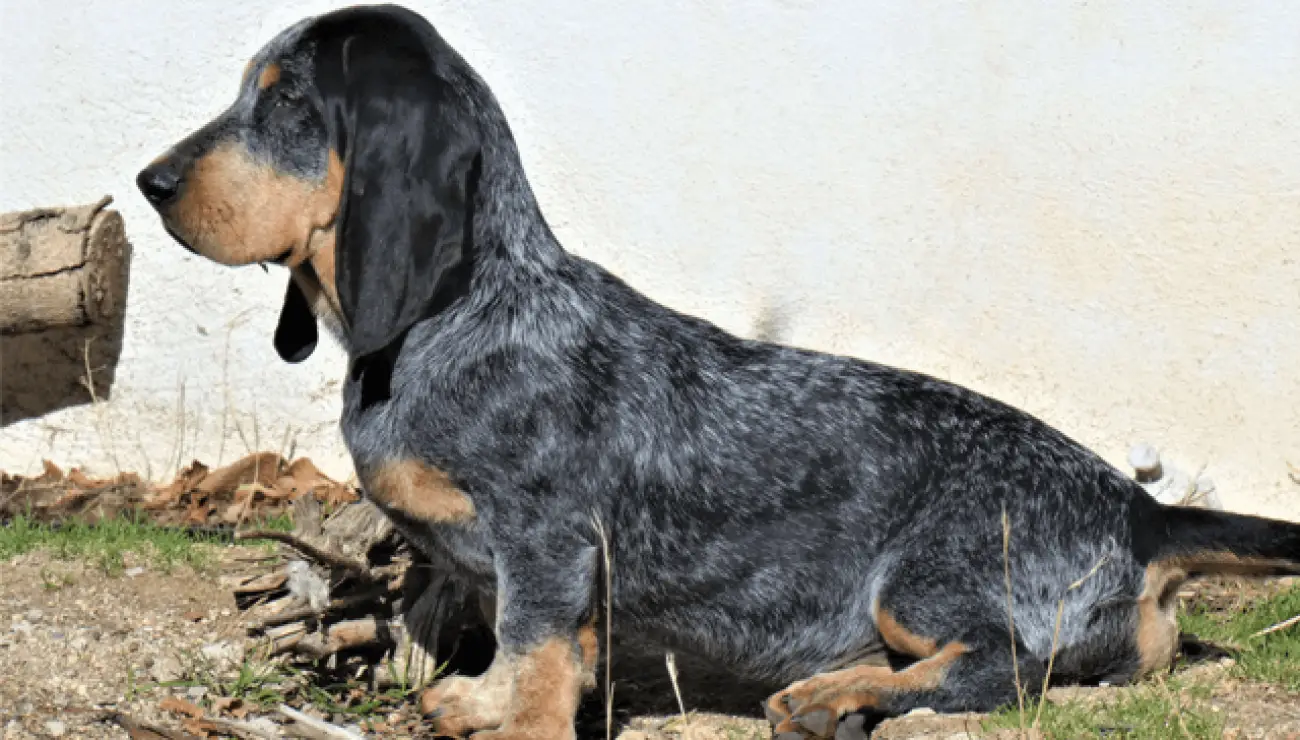
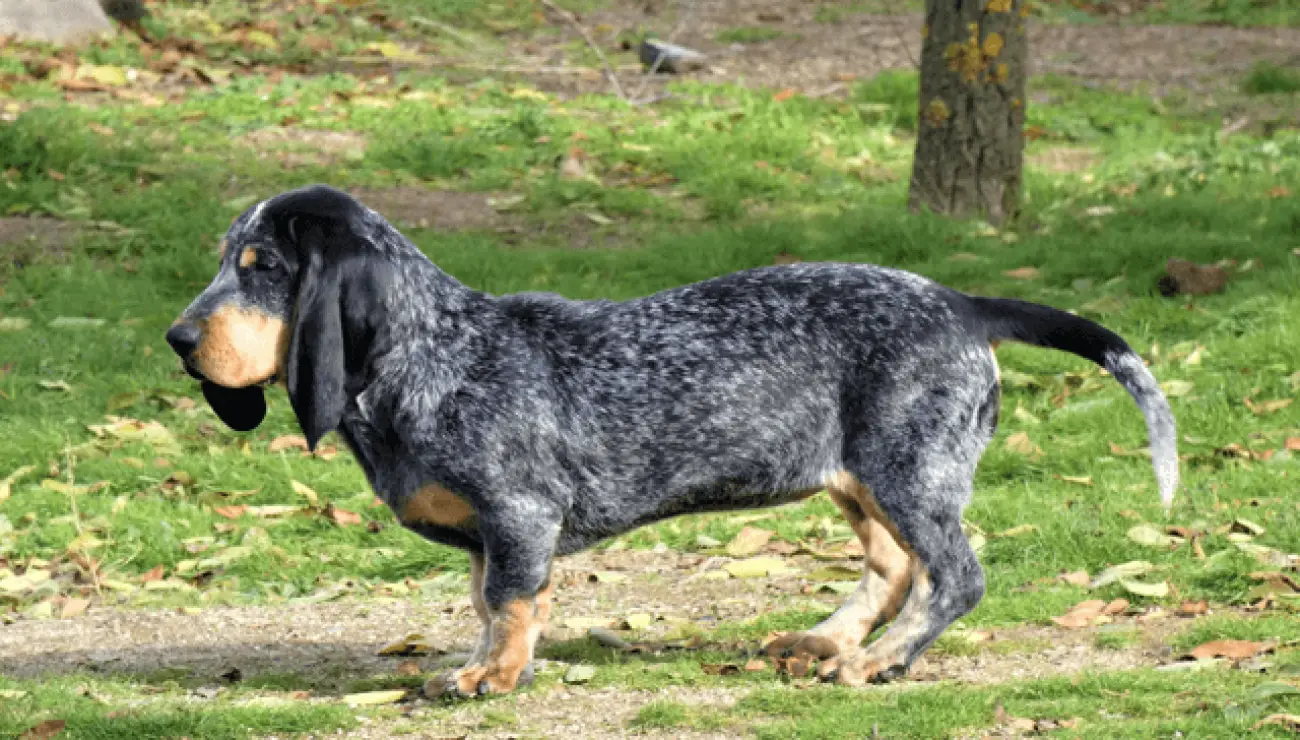
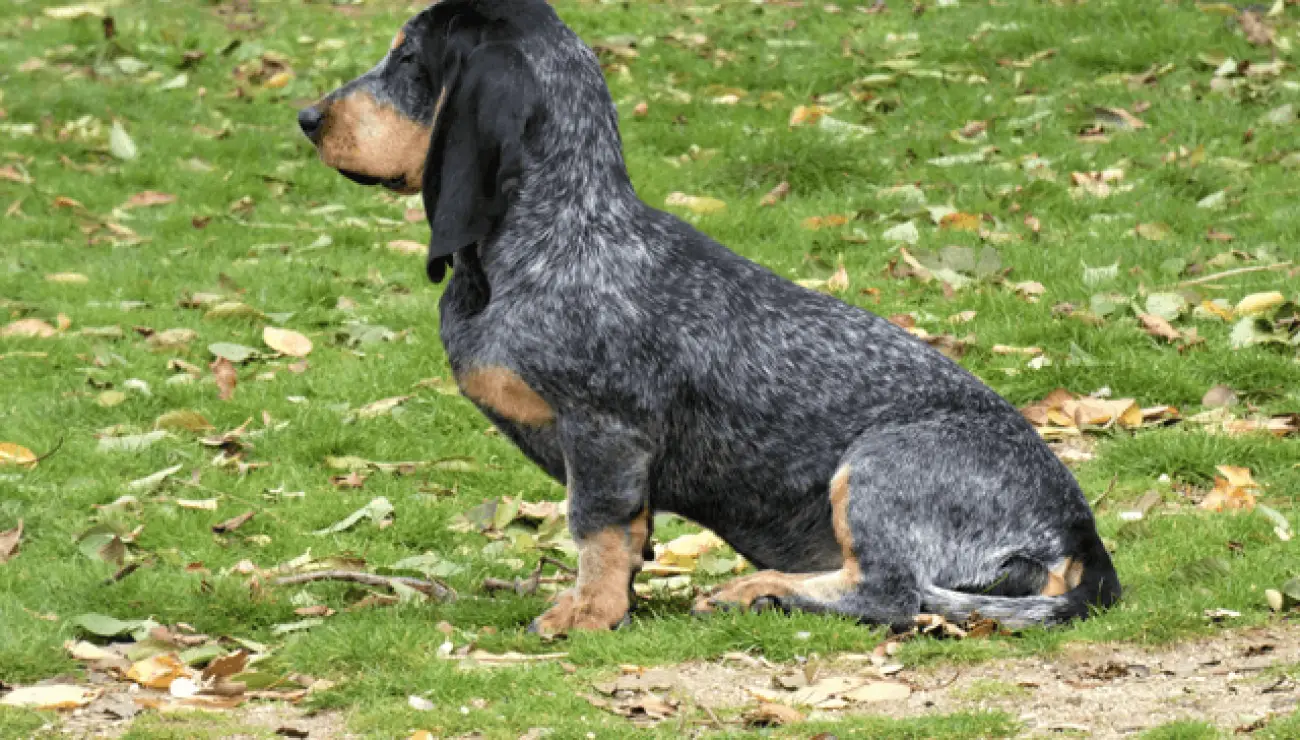
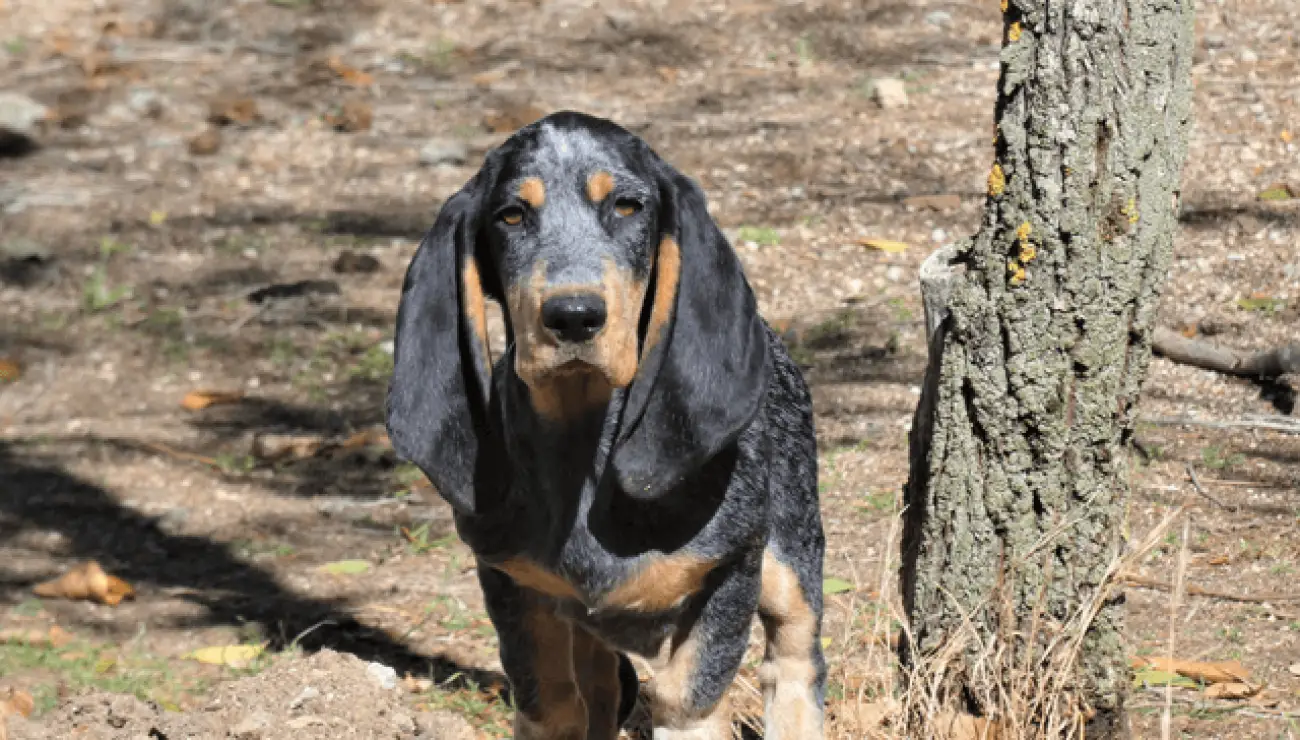
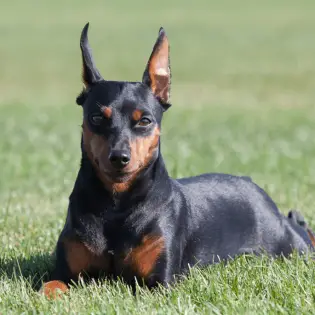
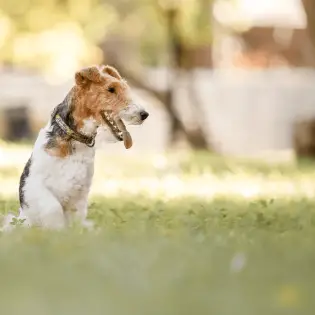
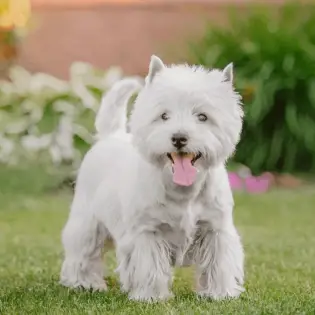
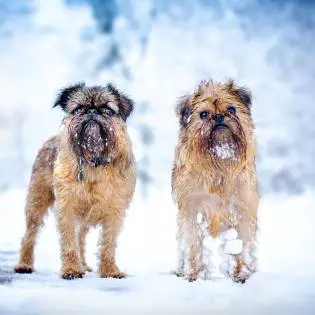
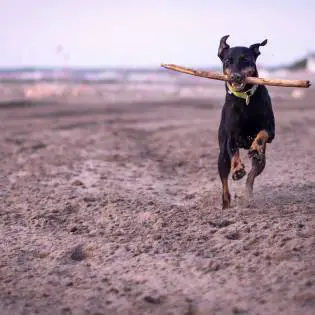
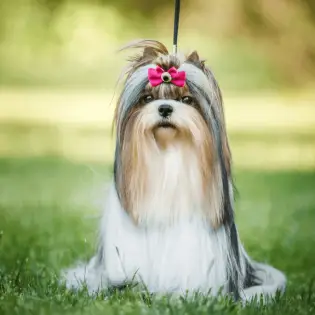
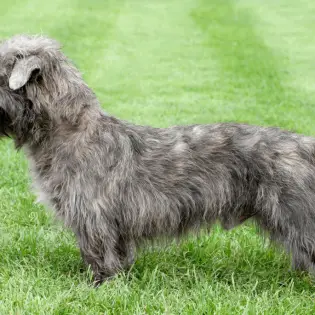
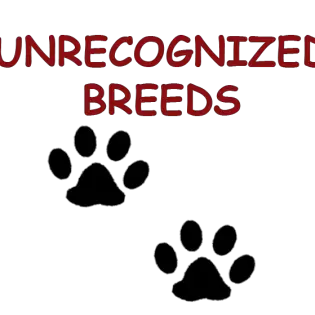
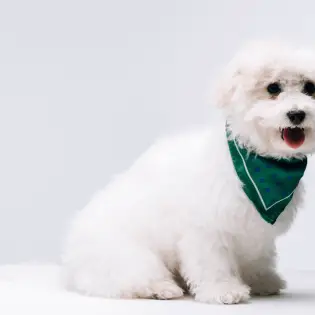
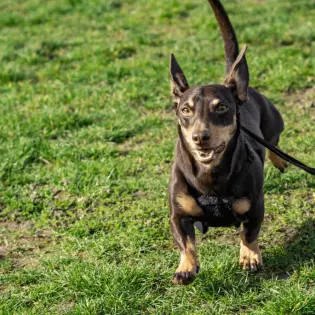

Share